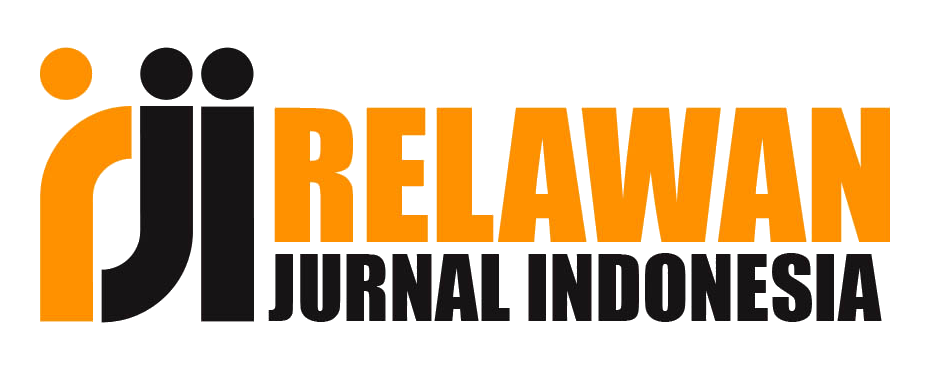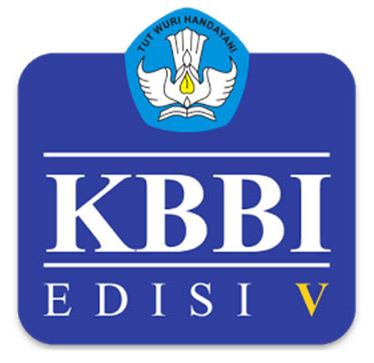Scientometric Study: Trends and Patterns in Global Partnership Research
(1) Universitas Paramadina, Jakarta Special Capital Region
(2) Universitas Paramadina, Jakarta Special Capital Region
(*) Corresponding Author
Abstract
Keywords
Full Text:
PDFReferences
Aghion, P., Alesina, A., & Trebbi, F. (2007). Democracy, Technology, and Growth. NBER Working Paper Series, No. 13180 (June). Department of Economics, Harvard University. Accessed at: https://dash.harvard.edu/handle/1/27759624.
Angel, D. P. (2002). Inter-firm Collaboration and Technology Development Partnerships within US Manufacturing Industries. Regional Studies, 36(4), 333–344. https://doi.org/10.1080/00343400220131115.
Antolin-Lopez, R., Martinez-del-Rio, J., Cespedes-Lorente, J. J., & Perez-Valls, M. (2015). The Choice of Suitable Cooperation Partners for Product Innovation: Differences between New Ventures and Established Companies. European Management Journal, 33(6), 472–484. https://doi.org/10.1016/j.emj.2015.09.002.
Bandara, T., & Wijewardene, L. N. (2018). Scientific Footprint of South Asian Fisheries and Aquaculture Research: A Scientometric Study between 2000 and 2017. Proceedings of International Symposium on Emerging Trends in Education and Library & Information Science (Libsym), LS39, 154–159.
Barney, J. B. (1991). Firm Resources and Sustained Competitive Advantage. Journal of Management, 17(1), 99–120.
Bernal, J. L. (2022). Mexico and China Continuously Renovate Their Comprehensive Strategic Partnership for Mutual Benefit. In Wang, H., & Miao, L. (eds) China and the World in a Changing Context, China and Globalization. Singapore: Springer. https://doi.org/10.1007/978-981-16-8086-1_1.
Blind, K., & Mangelsdorf, A. (2013). Alliance Formation of SMEs: Empirical Evidence from Standardization Committees. IEEE Transactions on Engineering Management, 60(1), 148–156. https://doi.org/10.1109/TEM.2012.2192935.
Boyle, F., & Sherman, D. (2006). Scopus: The Product and Its Development. The Serials Librarian, 49(3), 147–153.
Cabacungan, P. M., Tangonan, G. L., & Cabacungan, N. G. (2020). University-Community Partnership for Water Technology Deployment and Co-Innovation: A Decade of Engagement. International Journal of Advanced Research and Publications (IJARP), 4(5), 81–90.
Camargo, M., Morel, L., & Lhoste, P. (2021). Progressive University Technology Transfer of Innovation Capabilities to SMEs: An Active and Modular Educational Partnership. In: Mietzner, D., Schultz, C. (eds), New Perspectives in Technology Transfer, 181–205. FGF Studies in Small Business and Entrepreneurship. Springer, Cham. https://doi.org/10.1007/978-3-030-61477-5_11.
Chadegani, A. A., Salehi, H., Yunus, M. M., Farhadi, H., Fooladi, M., Farhadi, M., & Ebrahim, N. A. (2013). A Comparison between Two Main Academic Literature Collections: Web of Science and Scopus Databases. Asian Social Science, 9(5), 18–26. https://doi.org/10.5539/ass.v9n5p18.
Chavarro, D., Ràfols, I., & Tang, P. (2018). To What Extent is Inclusion in the Web of Science an Indicator of Journal ‘Quality’? Research Evaluation, 27(2), 106–118. https://doi.org/10.1093/reseval/rvy001.
Chunling, L., Memon, J. A., Thanh, T.L., Ali, M., & Kirikkaleli, D. (2021). The Impact of Public-Private Partnership Investment in Energy and Technological Innovation on Ecological Footprint: The Case of Pakistan. Sustainability, 13(18), 1–16. https://doi.org/10.3390/su131810085.
Confraria, H., & Godinho, M. M. (2015). The impact of African science: a bibliometric analysis. Scientometrics, 102, 1241–1268. https://doi.org/10.1007/s11192-014-1463-8.
Dutta, D. K., & Hora, M. (2017). From Invention Success to Commercialization Success: Technology Ventures and the Benefits of Upstream and Downstream Supply-Chain Alliances. Journal of Small Business Management, 55(2), 216–235. https://doi.org/10.1111/jsbm.12334.
Eberts, R. W., & Erickcek, G. A. (2002). The Role of Partnerships in Economic Development and Labor Markets in the United States. Upjohn Institute Staff Working Paper, No. 02-75 (January). http://dx.doi.org/10.2139/ssrn.301865.
Ferrel, O. C., Gonzales-Padron, T. L., Hult, G. T. M., & Maignan, I. (2010). From Market Orientation to Stakeholder Orientation. Journal of Public Policy and Marketing, 29(1), 93–96.
Filatova, I., Nikolaichuk, L., Zakaev, D., & Ilin, I. (2021). Public-Private Partnership as a Tool of Sustainable Development in the Oil-Refining Sector: Russian Case. Sustainability, 13(9), 1–23. https://doi.org/10.3390/su13095153.
Freeman, R. E. (2010). Strategic Management: A Stakeholder Approach. Cambridge, MA, USA: Cambridge University Press.
Gonzalez-Alcaide, G., Park, J., Huamani, C., & Ramos, J. M. (2017). Dominance and Leadership in Research Activities: Collaboration between Countries of Differing Human Development is Reflected through Authorship Order and Designation as Corresponding Authors in Scientific Publications. PLoS One, 12(8), 1–30. https://doi.org/10.1371/journal.pone.0182513.
Haibin, N. (2010). Emerging Global Partnership: Brazil and China. Revista Brasileira de Política Internacional, 53(Special Edition), 183–192. https://doi.org/10.1590/S0034-73292010000300011.
Hall, C. M. (2009). Rethinking Collaboration and Partnership: A Public Policy Perspective. Journal of Sustainable Tourism, 7(3&4), 274–289.
Hatton, M. J., & Schröeder, K. (2011). Partnership Theory and Practice: Time for a New Paradigm. Canadian Journal of Development Studies, 28(1), 157–162. https://doi.org/10.1080/02255189.2007.9669192.
Hemphill, T., & Vonortas, N. (2003). Strategic Research Partnership: A Managerial Perspective. Technology Analysis & Strategic Management, 15(2), 255–271. https://doi.org/10.1080/0953732032000051145.
Hennessey, R., Pittman, J., Morand, A., & Douglas, A. (2017). Co-benefits of Integrating Climate Change Adaption and Mitigation in the Canadian Energy Sector. Energy Policy, 111, 214–221. https://doi.org/10.1016/j.enpol.2017.09.025.
Hlehel, M. S., & Muhammad, N. J. (2022). The Role of Dialogue Leadership in Building Strategic Partnership. World Economics & Finance Bulletin, 11, 72–80.
Huwaidin, M. B. (2022). China’s Strategic Partnership with the UAE: Foundation and Process. Comparative Strategy, 41(3), 296–313. https://doi.org/10.1080/01495933.2022.2057734.
Ittipanuvat, V., Fujita, K., Sakata, I., & Kajikawa, Y. (2014). Finding Linkage between Technology and Social Issue: A Literature-based Discovery Approach. Journal of Engineering and Technology Management, 32, 160–184. https://doi.org/10.1016/j.jengtecman.2013.05.006.
Iyer, E. (2003). Theory of Alliances: Partnership and Partner Characteristics. Journal of Nonprofit & Public Sector Marketing, 11(2), 41–57. https://doi.org/10.1300/J054v11n01_04.
Jawahar, I. M., & McLaughlin, G. L. (2001). Toward a Descriptive Stakeholder Theory: An Organizational Life Cycle Approach. Academy of Management Review, 26(3), 397–414. https://doi.org/10.2307/259184.
Jones, T. M., Felps, W., & Bigley, G. (2007). Ethical Theory and Stakeholder Related Decision: The Role of Stakeholder Culture. Academy of Management Review, 32(1), 137–155. https://doi.org/10.5465/amr.2007.23463924.
Kabanov, Y. A., & Chugunov, A. V. (2018). Conceptualization of Terms Used in Smart Cities and E-Governance Research: A Scientometrics Study. International Journal of Open Information Technologies, 6(11), 54–58.
Knobel, A., & Sedalishchev, V. (2017). Risks and Benefits for EAEU from Various Integration Scenarios in Asia-Pacific Region. Economic Policy, 2, 72–85.
Kullenberg, C., & Kasperowski, D. (2016). What Is Citizen Science? – A Scientometric Meta-Analysis. PLoS ONE, 11(1). https://doi.org/10.1371/journal.pone.0147152.
Lai, S., Holland, M., & Kelly, S. (2019). The Emperor’s New Clothes? Perceptions of the EU’s Strategic Partnerships in Asia. Asia Europe Journal, 17, 341-360. https://doi.org/10.1007/s10308-019-00558-y.
Lasker, R. D., Weiss, E. S., & Miller, R. (2001). Partnership Synergy: A Practical Framework for Studying and Strengthening the Collaborative Advantage. The Milbank Quarterly, 79(2), 179–205. https://doi.org/10.1111/1468-0009.00203.
Lawrence, A. T. (2002). The Drivers of Stakeholder Engagement: Reflection on the Case of Royal Dutch/Shell. Journal of Corporate Citizenship, (6), 71–85.
Leydesdorff, L., Carley, S. & Rafols, I. (2013). Global Maps of Science Based on the New Web-of-Science Categories. Scientometrics, 94, 589–593. https://doi.org/10.1007/s11192-012-0784-8.
Li, Q. M., Scollay, R., & Gilbert, J. (2017). Analyzing the Effects of the Regional Comprehensive Economic Partnership on FDI in a CGE Framework with Firm Heterogeneity. Economic Modelling, 67(C), 409–420. https://doi.org/10.1016/j.econmod.2017.07.016.
Lin, H.-F. (2014). The Impact of Socialization Mechanisms and Technological Innovation Capabilities on Partnership Quality and Supply Chain Integration. Information Systems and e-Business Management, 12, 285–306.
Maak, T. (2007). Responsible Leadership, Stakeholder Engagement, and the Emergence of Social Capital. Journal of Business Ethics, 74, 329–343. https://doi.org/10.1007/s10551-007-9510-5.
Mackintosh, M. (1992). Partnership: Issues of Policy and Negotiation. Local Economy, 7(3), 210–224. https://doi.org/10.1080/02690949208726149.
Marshall, J. D., & Toffel, M. W. (2005). Framing the Elusive Concept of Sustainability: A Sustainability Hierarchy. Environmental Science & Technology, 39(3), 673–682.
Martín-Martín, A., Orduna-Malea, E., Thelwall, M., & López-Cózar, E. D. (2018). Google Scholar, Web of Science, and Scopus: A Systematic Comparison of Citations in 252 Subject Categories. Journal of Informetrics, 12(4), 1160–1177.
Mingers, J., & Leydesdorff, L. (2015). A Review of Theory and Practice in Scientometrics. European Journal of Operational Research, 246(1), 1–19.
Mongeon, P., & Paul-Hus, A. (2016). The Journal Coverage of Web of Science and Scopus: A Comparative Analysis. Scientometrics, 106(1), 213–228. https://doi.org/10.1007/s11192-015-1765-5.
Oliveira, I. D. B., Nunes, R., Mattiello, L., Barros-Ribeiro, S., Souza, I. P. D., Coelho, A. S. G., & Collevatti, R. G. (2019). Research and Partnership in Studies of Sugarcane Using Molecular Markers: A Scientometric Approach. Scientometrics, 119, 335-355. https://doi.org/10.1007/s11192-019-03047-6.
Osei-Kyei, R., Jin, X., Nnaji, C., Akomea-Frimpong, I., & Wuni, I.Y. (2022). Review of Risk Management Studies in Public-Private Partnerships: A Scientometric Analysis. International Journal of Construction Management, April. https://doi.org/10.1080/15623599.2022.2063013.
Piening, E. P., Salge, T. O., & Schäfer, S. (2016). Innovating Across Boundaries: A Portfolio Perspective on Innovation Partnerships of Multinational Corporations. Journal of World Business, 51(3), 474–485. https://doi.org/10.1016/j.jwb.2016.01.001.
Pirelli, T., Chiumenti, A., Morese, M. M., Bonati, G., Fabiani, S., & Pulighe, G. (2021). Environmental Sustainability of the Biogas Pathway in Italy through the Methodology of the Global Bioenergy Partnership. Journal of Cleaner Production, 318, 128483. https://doi.org/10.1016/j.jclepro.2021.128483
Peteraf, M. A. (1993). The Cornerstones of Competitive Advantage: A Resource-based View. Strategic Management Journal, 14(3): 179–191.
Peykari, N., Hashemi, H., Ashgari, G., Ayazi, M., Janbabei, G., Malekzadeh, R., Raeisi, A., Sadrolsadat, A., Asadi-Lari, M., Aliasghar, F., Farzadfar, F., Ghanei, M., Haghdoost, A. A., Heshmat, R., Jamshidi, H., Ostavar, A., Takian, A., & Larijani, B. (2018). Scientometric Study on Non-communicable Diseases in Iran: A Review Article. Iranian Journal of Public Health, 47(7), 936–943.
Poreau, B. (2016). Scientometrics on Public Health Research in Iran: Increase of Area Studies despite Embargoes? A Review Article. Iranian Journal of Public Health, 46(3), 281–285.
Ramirez, M. C., & Devesa, R. A. R. (2019). A scientometric look at mathematics education from the Scopus database. The Mathematics Enthusiast, 16(1-3), 37–46. https://doi.org/10.54870/1551-3440.1449.
Reed, A. M., & Reed, D. (2009). Partnerships for Development: Four Models of Business Involvement. Journal Business Ethics, 90(1), 3–37. https://doi.org/10.1007/s10551-008-9913-y.
Repanovici, A., & Landøy, A. (2018). Tracking and Predicting Growth of Health Information Using Scientometrics Methods and Google Trends. Proceedings of IFLA WLIC 2018, Kuala Lumpur, Malaysia, 1–11.
Repanovici, R., & Nedelcu, A. (2018). 3D Printing New Direction and Collaboration in Scientific Research: A Scientometric Study Using Web of Science, Clarivate Analytics Database. MATEC Web of Conferences, 178. doi.org/10.1051/matecconf/201817807009.
Rizzi, F., Eck, N. J. V., & Frey, M. (2014). The Production of Scientific Knowledge on Renewable Energies: Worldwide Trends, Dynamics and Challenges, and Implications for Management. Renewable Energy, 62, 657–671.
Rothaermel, F. (2012). Strategic Management: Concepts and Cases. New Jersey, USA: McGraw-Hill/Irwin.
Rowley, T. J. (1997). Moving Beyond Dyadic Ties: A Network Theory of Stakeholder Influences. The Academy of Management Review, 22(4), 887–910. https://doi.org/10.2307/259248.
Rowley, T. J., & Moldoveanu, M. (2003). When will Stakeholder Groups Act? An Interest- and Identity-based Model of Stakeholder Group Mobilization. The Academy of Management Review, 28(2), 204–219. https://doi.org/10.2307/30040709.
Saravanan, G., & Basu, A. (2014). Authorship and Collaboration Pattern in Ecological Applications: A Scientometric Study. Proceedings of Third National Conference on Scientometrics, Big Data Analytics (BDA) and Libraries. Kuvempu University, Jnana Sahyadri, Shankaraghatta (May).
Saritas, O., & Burmaoglu, S. (2015). The Evolution of the Use of Foresight Methods: A Scientometric Analysis of Global FTA Research Output. Scientometrics, 105, 497–508. https://doi.org/10.1007/s11192-015-1671-x.
Selsky, J. W., & Parker, B. (2005). Cross-Sector Partnership to Address Social Issues: Challenges to Theory and Practice. Journal of Management, 31(6), 849–873. https://doi.org/10.1177/0149206305279601.
Shemer, O., & Schmid, H. (2007). Toward a New Definition of Community Partnership: A Three-Dimensional Approach. Journal of Rural Cooperation, 35(2), 123–139.
Singer, M. E., Hack, D. C., & Hanley Jr., D. F. (2022). The Power of Public–Private Partnership in Medical Technology Innovation: Lessons from the Development of FDA-cleared Medical Devices for Assessment of Concussion. Journal of Clinical and Translational Science, 6(1), E42. https://doi.org/10.1017/cts.2022.373.
Spanos, Y. E., Vonortas, N. S., & Voudouris, I. (2015). Antecedents of Innovation Impacts in Publicly Funded Collaborative R&D Projects. Technovation, 36-37, 53–64. https://doi.org/10.1016/j.technovation.2014.07.010
Tennyson, R. (2011). The Partnering Toolbook: An Essential Guide to Cross-sector Partnering. International Business Leaders Forum (IBLF). Oxford, UK: The Partnering Initiative.
United Nations (2019). Do You know all 17 DGs? Sustainable Development Goals. UN Department of Economic and Social Affairs. Accessed by January 2019 at https://sdgs.un.org/goals.
Upvall, M. J., & Leffers, J. M. (2018). Revising a Conceptual Model of Partnership and Sustainability in Global Health. Public Health Nursing, 35(3), 228–237. https://doi.org/10.1111/phn.12396.
Van Eck, N. J., & Waltman, L. (2010). Software Survey: VOSviewer, a Computer Program for Bibliometric Mapping. Scientometrics, 84, 523–538. https://doi.org/10.1007/s11192-009-0146-3.
Van Leeuwen, T. N., Moed, H. F., Tijssen, R. J. W., Visser, M. S., & Van Raan, A. F. J. (2001). Language Biases in the Coverage of the Science Citation Index and Its Consequences for International Comparisons of National Research Performance. Scientometrics, 51, 335–346. https://doi.org/10.1023/A:1010549719484.
Wassmer, U., Pain, G., & Paquin, R. L. (2017). Taking Environmental Partnerships Seriously. Business Horizons, 60(1), 135-142. https://doi.org/10.1016/j.bushor.2016.09.009.
Yu-Jin, K. & Jae-Yong, S. (2022). Too Costly to Convince: How do Startups Deliver Radical Innovation via Partnership? Proceedings of Conference on Business Venturing and Entrepreneurship, Spring (April), 25-30. The Korean Society of Business Venturing.
DOI: https://doi.org/10.30588/jmp.v12i1.1071
Article Metrics
Abstract view : 322 timesPDF - 34 times
Refbacks
- There are currently no refbacks.
Copyright (c) 2022 Prima Naomi, Iqbal Akbar

This work is licensed under a Creative Commons Attribution 4.0 International License.

Jurnal Maksipreneur: Manajemen, Koperasi, dan Entrepreneurship is licensed under a Creative Commons Attribution 4.0 International License.
Based on a work at http://ejournal.up45.ac.id/index.php/maksipreneur.
Jurnal Maksipreneur: Manajemen, Koperasi, dan Entrepreneurship has been indexed/archived by:




Journal of Maksipreneur: Management, Cooperative, and Entrepreneurship (JMP)
Organized by Management Department, Universitas Proklamasi 45, Yogyakarta, Indonesia
Published by Universitas Proklamasi 45, Yogyakarta, Indonesia
Email: [email protected] | [email protected]












